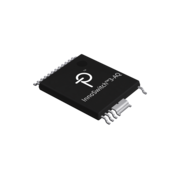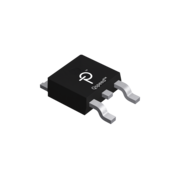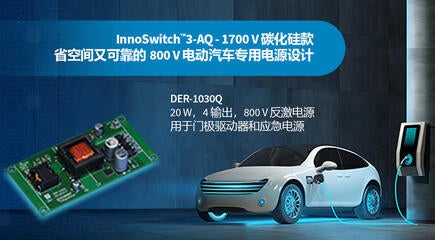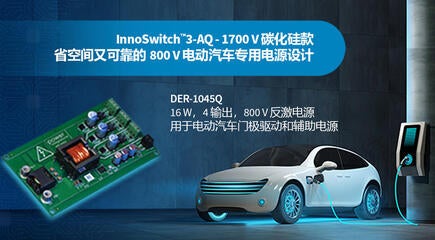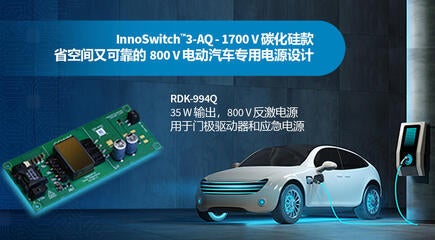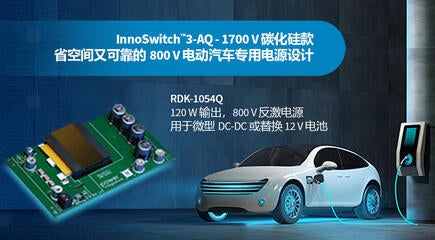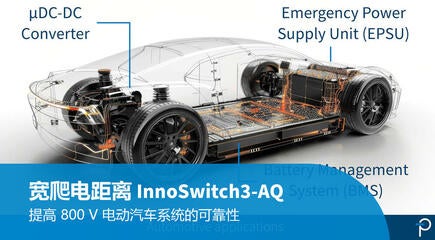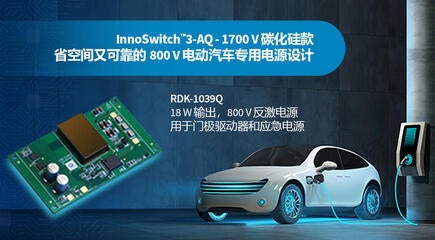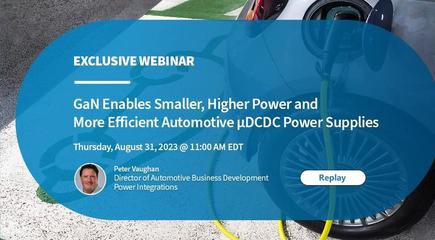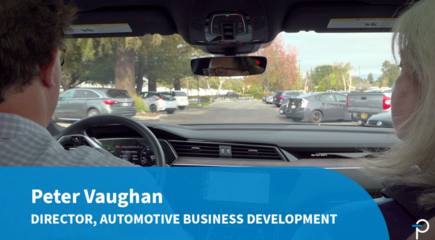车载充电器 (OBC)
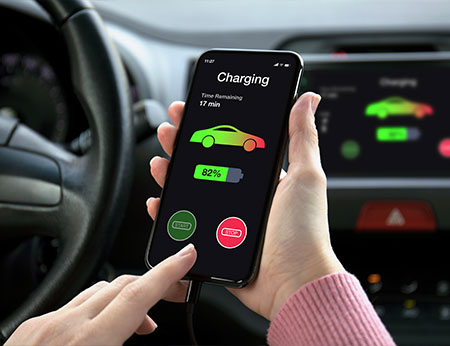 The OBC function can either be a standalone module or integrated with the main HV DC-DC. Its function is to take AC power provided via the vehicle charging port and recharge the vehicle battery.
The OBC function can either be a standalone module or integrated with the main HV DC-DC. Its function is to take AC power provided via the vehicle charging port and recharge the vehicle battery.
Regional differences on availability of 3 phase AC power splits OBCs into supporting single phase or single and 3 phase input. Power levels are typically 3.6 kW to 11 kW though some vehicle can offer up to 22 kW. Higher AC power levels exist for commercial vehicles but typically due to cost and size charging moves to DC fast based charging at up to 350 kW. The power electronics in off-board charging are external and directly connect to the vehicle battery during charging.
OBCs are likely to become more sophisticated and add value to EV ownership by providing the ability to be grid tied, that is provide energy from the vehicle battery back into the AC supply. This opens many opportunities such as backup power for a home, during camping, peak load management or grid level demand response.
Power Integrations offers low component count, isolated and non-isolated integrated flyback and buck controller ICs ideal for the internal housekeeping supplies within an OBC. These can be both on the AC side (to operate the converter stages) or that HVDC battery side (loss of 12 V recovery supply). With the move to 800 V vehicle architectures these solutions can operate at input voltages above 1000 V. For rectification within the OBC Qspeed diodes offer an attractive alternative to silicon carbide with a soft, very low loss recovery giving higher efficiency and lower EMI.


